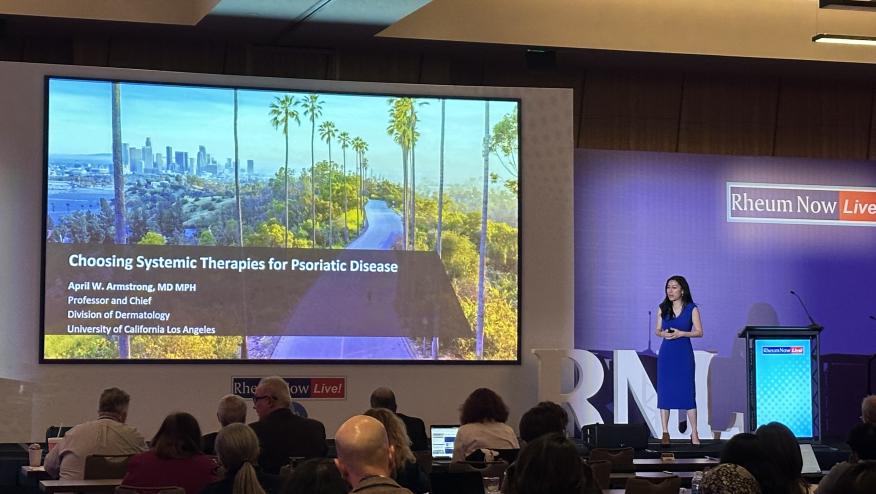Co-management of Psoriatic Disease Save

It is a common clinical scenario to see someone with both severe psoriatic arthritis and skin psoriasis. Co-management with dermatology optimises the care of this patient group.
In an ideal world this would involve a combined clinic with our local friendly dermatologist. For many of us, however, this is not practical for many reasons. The excellent Saturday morning session on choosing systemic therapies in psoriatic disease at RheumNow Live 2024 from dermatologist extraordinaire Dr. April Armstrong was therefore hugely insightful with regards to the thought processes of our dermatology colleagues in this setting. With these patients I often have moments of puzzlement with regard to just where dermatology are coming from and this session really helped clarify some of these issues.
The first conundrum was around the volume of referrals I get requesting an urgent review for a patient who has severe skin psoriasis and some low level joint symptoms. When these referrals come in, my instinctive reaction is one of frustration; I don’t have capacity for this group, and my pre-session attitude was that they should just get on and treat the skin psoriasis with a biologic and their joints will surely improve with skin improvement. Dr Armstrong described how in plaque psoriasis the very first branch point in choosing a treatment is whether the patient has psoriatic arthritis. This was a lightbulb moment for me, I now understand why it is so vital to know if those low level musculoskeletal symptoms are inflammatory arthritis or osteoarthritis or fibromyalgia.
The second key point for me was the preference among dermatologists for IL-17 and IL-23 inhibitors over TNF inhibitors. I mean I kind of knew this, I see them choosing these treatments first. But I look at the data and see that yes they are better for skin on average but about the same for every other psoriatic disease manifestation, and many patients skin does well on the TNF inhibitor. From our perspective as rheumatologists we can rationalise using TNF inhibitors first, we have longer term safety data, the work more comprehensively for many of the non-skin extra-articular manifestations, and in many countries they are substantially more cost-effective. In rheumatoid arthritis, they are a clear first choice biologic. Dr Armstrong’s perspective on this helped crystallize the issue in psoriatic disease for me, and I think maybe we sometimes don’t weight the skin data as strongly as we should in our treatment decisions – this is wrong, aside from the more obvious visual aspects, skin disease has major implications for social and psychological aspects of health. I think I may start to bring these non-TNF biologics further forward in my treatment algorithm more often in psoriatic disease.
JAK inhibitors continue to be intensely debated in rheumatology in general, and in psoriatic disease I had generally been utilising them in a similar way to how I do in rheumatoid arthritis. Dr Armstrong described to us how our currently available JAK inhibitors are generally not viewed by dermatologists as top level treatments for skin psoriasis and that it is really TYK2 inhibitors that would be considered here. This is useful information and a little surprising to me. JAK inhibitors have been revolutionary in many previously tricky to treat skin diseases such as alopecia areata that I guess I just kind of presumed a general dermatology love for them. I am not sure how it influences my practice in those patients with recalcitrant psoriatic arthritis who have failed a TNF, IL-17, and IL-23 inhibitor. Maybe it will suggest to me that in those with severe skin disease we should go back in class to a second IL-17 or IL-23 rather than using a JAK inhibitor, or utilise the newer agents bimekizumab and deucravacitinib.
The final point I got from this talk is a reinforcement of one I had started doing already and have used throughout this article. I think it is time to stop talking about psoriatic arthritis and rename this as psoriatic disease. I think this better reflects the disease process and will facilitate the optimal care of these patients.
Hopefully this session will empower us all to maximise the outcomes of people with psoriatic disease.









If you are a health practitioner, you may Login/Register to comment.
Due to the nature of these comment forums, only health practitioners are allowed to comment at this time.